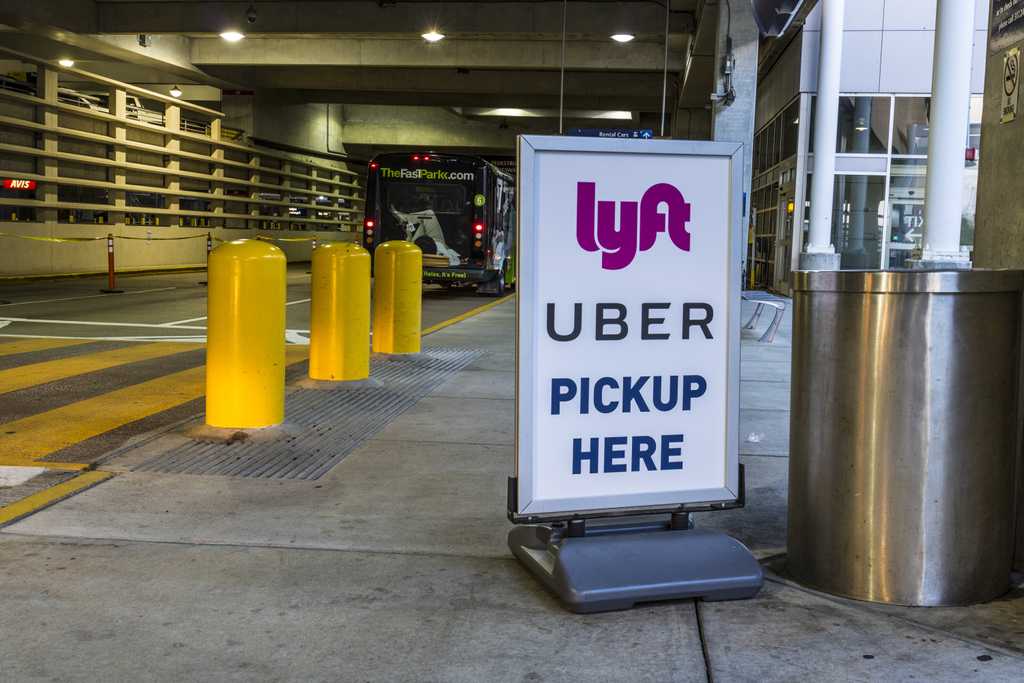Ridesharing has emerged in recent years as a popular alternative to driving a personal vehicle, taking a taxi, or using public transportation. Uber, Lyft and other rideshare services (also referred to as Transportation Network Companies, or TNCs) are convenient and easy to use for riders. They also provide a source of extra income for drivers willing to use their personal vehicles for a business purpose. According to Uber, the company had 3.9 million drivers as of December 2018 (the most recent year for which it shares data), and 91 million active riders taking 14 million trips each day.
If the thought of making a little extra money as a rideshare driver interests you — or perhaps if you’re already a driver — you owe it to yourself to understand the insurance implications of the job. Fact is, it’s not as simple as assuming your personal car insurance, or the insurance coverage the TNC provides, will take care of things if you’re in an accident. In fact, there may be some potentially significant coverage gaps.
The good news is that rideshare insurance has been developed in response to this growing trend. It ensures you’re fully covered at all times when you’re signed in to a ridesharing app, as well as when you’re “off the clock” and using your car for personal needs such as commuting, running errands, or going on road trips.
More about the ins and outs of rideshare insurance in a bit. First, let’s explain why it’s so important to have it if you’re working for a TNC.
What are coverage gaps?
Yes, TNCs such as Uber and Lyft do provide car insurance to their drivers. You, of course, have your own car insurance policy. However, those sources of coverage each apply only in specific rideshare situations, and those situations don’t exactly mesh. That can leave you with gaps in coverage.
Uber and Lyft refer to these situations as “periods.” Let’s look at how they break down:
Period 0: Your rideshare app is off. You’re insured with your personal auto insurance policy when you drive. The TNC’s insurance provides no coverage at all during this period.
If you are involved in an accident during period 0: You’d rely on your personal auto insurance for coverage. The TNC has zero responsibility for your liability to other involved drivers, personal injuries or vehicle damage.
Period 1: Your rideshare app is on and you’re waiting for a ride request. At this point, your personal auto insurance policy likely provides no coverage, as this is considered a “business use” of your vehicle. The TNC’s insurance provides only a minimal amount of liability coverage: $50,000 per person for bodily injury, $100,000 per accident for bodily injury, $25,000 per accident for property damage. It provides no comprehensive or collision coverage.
If you’re involved in an accident during period 1: The TNC’s policy would pay. However, if your personal auto policy has higher liability coverage limits, or optional coverages such as comprehensive and collision, then you have a significant coverage gap. In plain terms, you may end up needing to pay out-of-pocket to make good on your liability to other drivers, and/or to repair your own vehicle.
Periods 2 and 3: You’ve accepted a ride request and are driving to pick up a passenger, or the passenger is in your car. The TNC’s policy is in full force, offering $1 million in liability, and contingent comprehensive and collision coverage with a $2,500 deductible (“contingent” means that the TNC provides these coverages only if you also have them on your personal auto insurance policy). Your personal insurance provides no coverage.
If you’re involved in an accident during periods 2 or 3: The TNC would pay up to $1 million for your liability to other drivers. With collision coverage, it would also help reimburse you for repairs to your own vehicle. Note, however, that the $2,500 collision deductible may be higher than the deductible on your own policy.
So, unless you already drive with just your state’s minimum legally required car insurance (which is seldom a good idea), then you probably have some significant coverage gaps when you drive for Uber, Lyft, or any other TNC.
What could that look like?
Say you cause a multi-car accident while in period 1, and are responsible for other drivers’ injuries and vehicle damage. Uber would pay only up to $100,000 for treatment of those injuries, and $25,000 for the damage. You’d be responsible out-of-pocket for any costs above and beyond those figures.
Say that accident damages your own car, causing $5,000 worth of damage. If it’s in period you’d have to pay to repair that damage yourself. If it’s in period 2 or 3, Uber’s collision coverage would apply, but you’d have to pay a $2,500 deductible toward the repairs.
These coverage gaps are where your rideshare insurance would step in.
What is Rideshare insurance?
Rideshare insurance is an optional coverage, and is available from many personal auto insurers. Although it’s not legally required for drivers, it provides important financial protection if you cause an accident that results in injury or damage.
Where can I get Rideshare insurance?
Rideshare insurance typically comes in the form of an endorsement (an add-on) to your existing personal auto insurance policy. Some insurance companies instead offer a standalone policy that you buy in addition to your personal auto policy. Generally, you have to buy the rideshare insurance from the same company that provides your regular personal auto insurance — you can’t mix and match.
You can contact your insurance company or agent to get a quote; some companies offer quotes at their websites. When you get that quote, you’ll want to have handy your personal auto insurance policy declarations page, which is a summary of your coverages, limits, and deductibles. You should also have a current description of the insurance offered by the TNC. These policies are available on the websites of Uber and Lyft. By comparing the policies, you can identify your coverage gaps, and ensure your rideshare insurance has the coverage you need.
How rideshare insurance works?
In the examples outlined above, rideshare insurance would ensure your coverage during periods 1, 2, and 3 more closely matches the levels of coverage you have on your personal auto policy. Your insurance company would ensure you’re covered for your liabilities to other drivers, and for any damage to your own vehicle, up to the limits of your regular auto insurance policy. Be sure to read your rideshare insurance contract to understand exactly what is and isn’t covered in these situations, and contact the company or your agent if you have any questions or concerns.
Note: Most rideshare policies also provide coverage for drivers working for delivery services such as UberEATS and DoorDash. Contact your insurance company to find out if this might be an option for you.
How much does ridesharing insurance cost?
The cost of rideshare insurance varies by state and insurance company. As with your regular insurance, your premium will be affected by your vehicle’s year, make, and model; your driving record; the amount of coverage you need; and other factors.
According to one source, some companies charge a monthly premium (in addition to your regular premium) ranging from a few dollars to around $25. Others base the rideshare premium on a percentage of your regular car insurance premium, say 20 percent. So if you pay $100 per month for car insurance, your rideshare insurance would cost another $20 per month. Still others base the premium on the number of miles you drive while working as a rideshare driver.
Because these costs vary so widely, it may make sense to shop around with various insurance companies to see which provides the best overall combination of coverage and premium.
Where is rideshare insurance available?
As this is an emerging market for the insurance industry, rideshare insurance is still not available in every state, nor is it available from every insurance company.
Fortunately, all of the top five U.S. car insurance companies — State Farm, GEICO, Progressive, Liberty Mutual, and Allstate — offer some form of rideshare insurance. Allstate’s is available in every state except New York. Most of the other companies are in fewer states, but have plans to increase availability in the future.
Rideshare insurance alternatives
If rideshare insurance is not available to you — either because your insurance company doesn’t offer a rideshare policy, or because it’s simply not available in your state — you do have an alternative. You can insure your car with a commercial auto policy rather than a personal auto policy. A commercial auto policy is designed for vehicles used primarily for business, while allowing for “personal use” as well. It offers different levels of coverage, and thus tends to cost more than a personal auto policy. Contact your insurance company or agent to ask about its availability, coverage and costs.
The bottom line: if you’re driving for a rideshare company, you need insurance
Driving for a TNC can be a great way to put some extra cash in your pocket. However, driving without regard to your car insurance needs is asking for trouble. The good news is that the insurance industry is responding, with new policies that provide an affordable way to be covered.

